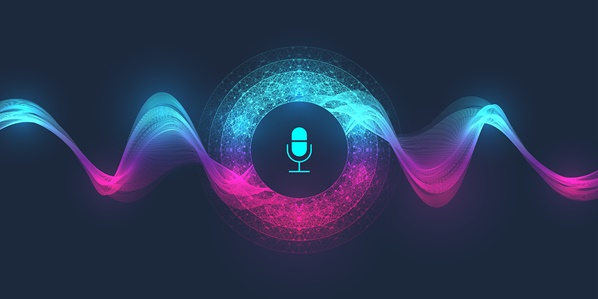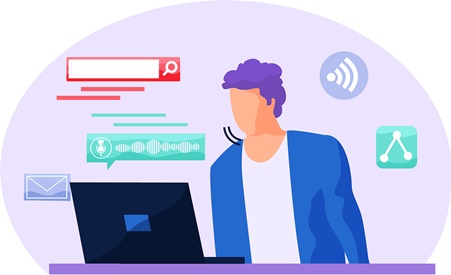
Voice is the fastest form of human communication and has long been the backbone of the customer service industry. Now, with the development of voicebots the power of voice is reaching new heights.
In this article, we will discuss the basics of voicebot technology and how it is changing the customer service industry.
What is a voicebot?
A voicebot is a computer program that can recognize and respond to voice commands. They are commonly used in voice-activated assistants, such as Amazon’s Alexa and Google Home. Voicebots are still relatively new technology, but they are growing in popularity due to their convenience and ease of use.
What is the difference between a voicebot and a chatbot?
At first glance, voicebots and chatbots may seem to be very similar. After all, they are both computer programs that are designed to communicate with humans. However, there is a key difference between these two types of bots. Voicebots are designed to respond to spoken requests, while chatbots typically communicate via written text.
How does a voicebot work?
A voicebot needs input from a user in order to function. This input can come in a variety of forms, but most often from voice commands. The voicebot will then process this information using natural language processing (NLP) algorithms that understand human speech patterns and vocabulary usage.
Voicebots also use machine learning techniques to improve their ability to recognize different phrases over time through repeated interactions with people who speak those phrases regularly; this is known as “training the voicebot.”
Once a voicebot has been trained, it can be used to provide information or assistance to users. The voicebot will respond to user queries using text-to-speech (TTS) software, which will convert the text into an audio message that can be played back to the user.
How are voicebots changing the customer experience?
The customer service industry is one of the first to adopt voicebot technology. This is because voicebots can help improve customer service in a number of ways:
- They can provide quick and easy access to information
- They can help customers with simple tasks, such as ordering food or checking account balances
- They can respond to customer inquiries in real time, which can help improve customer satisfaction
- They can collect data about customer interactions, which can be used to improve customer service strategies

How are Voicebots being used in the Contact Center?
Voicebots are already automating routine voice tasks in large contact centers.
They are being used to:
- Route calls to the correct agent
- Collect customer information
- Handle customer complaints
- Provide very basic customer service
- Train new agents
The use of voicebots in the contact center is still in its early stages, but it is clear that they have the potential to improve customer service and save businesses money. In the future, voicebots will likely play an even more important role in the contact center and other customer service industries.
What voicebot technology is already in use by contact centers?
There are a number of voicebots that are currently being used to automate voice tasks in contact centers, including:
- Watson Assistant from IBM
Watson Assistant is a virtual assistant created by IBM. It uses artificial intelligence to understand and respond to questions in natural language. In addition to call centers, Watson Assistant can also be used on websites. It is also available as an app for Android and iOS devices. Watson Assistant is powered by the Watson AI platform, which includes capabilities such as machine learning, natural language processing, and text-to-speech. Watson Assistant is available in over 20 languages, including English, Spanish, French, and Japanese.
- Amazon Lex from Amazon Web Services (AWS)
Amazon Lex is a voicebot from Amazon Web Services (AWS) that helps you build conversational bots or text chatbots. It uses automatic speech recognition (ASR) and natural language understanding (NLU) to recognize the user’s intent and fulfill the user’s requests. You can use Amazon Lex to build chatbots for customer service, lead capture, data collection, and many other applications. Amazon Lex is based on the same technology that powers Amazon Alexa, so it is highly accurate and scalable. You can use Amazon Lex to create bots that run on any platform, including web, mobile, and messaging platforms such as Facebook Messenger and Slack.
- Google Dialogflow from Google
Google Dialogflow is a voicebot platform that enables you to interact with your customers using natural, conversational language. With Dialogflow, you can create chatbots and virtual assistants that can understand and respond to your customers’ needs. Dialogflow is powered by Google’s machine learning technology, which allows it to constantly improve its understanding of customer queries. Additionally, Dialogflow integrates seamlessly with other Google products such as Calendar, Maps, and YouTube. This makes it easy to provide a comprehensive customer experience that goes beyond simple interactions.
- Microsoft Bot Framework from Microsoft
The Microsoft Bot Framework is a bot-building platform from Microsoft. The framework enables developers to create bots that interact with users via natural language processing and voice recognition. The bots can be used to perform a variety of tasks, such as providing customer support or booking appointments. The framework is based on the Azure Bot Service, which is a cloud-based service that provides the infrastructure necessary to run bots. The framework is available for free, and developers can use any programming language to create bots.
Each of these voicebot platforms has its own strengths and weaknesses, so contact centers should carefully consider which platform is best suited for their needs.
The future of voicebots
Voicebots are slowly but surely becoming more prevalent in customer service. While they will never be able to fully replace the human skills of customer service representatives, they can augment and improve the overall customer service experience.
Voicebots can provide 24/7 availability, quick and accurate responses to simple questions, and can help to free up human customer service representatives to handle more complex issues. In addition, voicebots can help to create a more personalised customer service experience by remembering details about previous interactions and using them to provide tailored recommendations.
As voicebot technology continues to develop, it is likely that they will play an increasingly important role in customer service.



